Sustainable drainage systems are a vital tool in the fight against urban flooding. This CPD module examines how they work, with a focus on the role played by permeable paving systems. It is sponsored by Tarmac

How to take this module
UBM’s CPD distance-learning programme is open to anyone seeking to develop their knowledge and skills. Each module also offers members of professional institutions an opportunity to earn between 30 and 90 minutes of credits towards their annual CPD requirement.
This article is accredited by the CPD Certification Service. To earn CPD credits, read the article and then click the link below to complete your details and answer the questions. You will receive your results instantly, and if all the questions are correctly answered, you will be able to download your CPD certificate straight away.
CPD CREDITS: 60 MINUTES
DEADLINE: 30 OCTOBER 2015
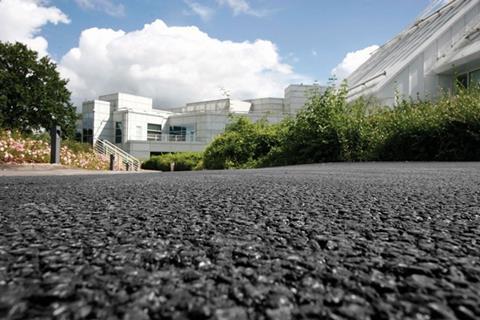
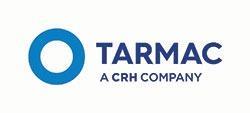
INTRODUCTION TO SuDS
The built environment has grown rapidly over the last 50 years, resulting in large areas of land being paved over with impermeable materials. Over the same period, instances where the UK has experienced three or more consecutive days of heavy rainfall have increased by 50%. With climate change predicted to lead to increasingly warm and wet weather, rainfall is likely to continue to rise. As a result, many experts believe the wide-scale flooding events experienced in 2007 and the winter of 2013/14 will become more frequent.
Traditional drainage systems are designed to remove rainwater as quickly as possible from where it falls and direct it into watercourses or drains. However, in cases of prolonged, heavy rainfall, this means public drainage systems quickly reach capacity and consequently overflow. This was starkly illustrated by the 2007 floods: the Environment Agency estimated that over two thirds of the 57,000 homes affected were not flooded by swollen rivers, but by water running off paving or overflowing from the overloaded drainage systems serving them.
Sustainable drainage systems, or SuDS, on the other hand, deal with surface water at source. Features such as permeable paving collect the water run-off and control the rate of discharge to drainage systems. During periods of high rainfall, these systems perform as a reservoir, delaying the discharge of storm water into watercourses or drainage systems. In certain instances, SuDs are capable of filtering pollutants from surface water as it is drained, improving water quality and potentially reducing the cost of water treatment, before releasing it via natural aquifers in a landscaped environment. Permeable paving is particularly effective as part of a SuDS system containing elements such as green roofs, soakaways, swales, attenuation tanks, ponds and wetlands, all of which contribute to the control of the drainage and quality of water.
This CPD will examine the benefits of SuDS and the legislation driving their use, before looking in-depth at permeable paving solutions.
BENEFITS OF SuDS
As well as reducing the risk of surface water flooding, SuDS offer a number of advantages over traditional systems:
- Removal of contamination Stormwater can easily become contaminated by petrol, diesel, heavy metals, detergents and other pollutants while running down roads and pathways, before entering the drainage system. With a traditional system, these are either drained straight into watercourses or have to be removed at treatment plants. This problem is exacerbated in areas with combined sewers, as these can spill sewage into watercourses. SuDS filter surface water as it is drained, improving water quality and reducing the cost of treatment. Permeable pavements are particularly effective in this area (see below).
- Reduced risk of water shortages Directing rainwater directly into watercourses or drains and sewers, results in natural aquifers being bypassed, reducing the level of the water table. This can lead to water shortages and result in natural streams and ponds drying up. With SuDS, rainwater is channelled into natural aquifers, keeping them recharged and reducing the risk of water shortages during periods of low rainfall.
- Better for people and the environment SuDS can be used to provide a constant supply of fresh water for lakes and pools and to create new water-based amenities, benefiting both local communities and wildlife. They also offer opportunities to create attractive green public spaces.
- Reduced pressure on existing systems SuDS can be incorporated into the redevelopment of the existing infrastructure, as well as installed in new housing and commercial and industrial developments, easing the pressure on overstretched drainage systems, sewers and water treatment plants.
LEGISLATION AND GUIDANCE
The Pitt Review 2008
Following the 2007 floods, the government commissioned an independent review to be undertaken by Lord Pitt. As a direct result of this, new guidance was introduced for the surfacing of front gardens in October 2008. This had two very important implications:
- Planning permission to pave a new or existing driveway of any size will not be required if a permeable (or porous) surface is used, or if the rainwater is directed to a lawn or border to drain naturally
- Planning permission will be required to pave an area greater than 5m2 with an impermeable surface if it does not provide run-off to a permeable area.
Town and Country Planning Order 2015
SuDS were set to become mandatory in England and Wales under the 2010 Flood and Water Management Act, but instead they will now be encouraged through the planning system. Since April 2015, planning conditions, section 106 agreements and other measures have been used to push the use of SuDS on schemes of 10 or more homes and other developments of a similar scale.
Scottish legislation
Legislation in Scotland is more established than for England and Wales. The Water Environment and Water Services (Scotland) Act made Scottish Water responsible for SuDS and their specifications in 2003. This was followed by the Flood Risk Management Act 2009 and the Controlled Activities Regulations (CAR) 2011, which made the use of SuDS mandatory for surface water run-off in all new developments (excluding single dwellings).
��ɫ����TV Regulations
Part H of the ��ɫ����TV Regulations covers drainage and waste disposal and sets out an order of preference for surface water discharge mechanisms, which favours SuDS over traditional systems. The hierarchy is as follows:
- Infiltration structures such as soakaways or infiltration trenches, where these can be adopted and properly maintained and will not give rise to any pollution or contamination.
- Direct discharge to existing watercourses
- Direct discharge to outfall to a sewer
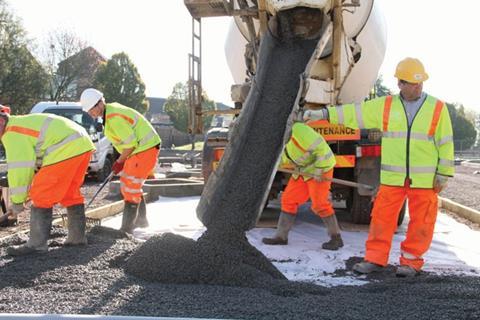

BREEAM
SuDS can help to project teams to achieve credits under the Water, Land Use and Ecology, and Pollution categories in the BRE’s environmental rating scheme. SuDS can reduce water consumption and improve water efficiency through the integration of rainwater harvesting; they can be used to create habitats to encourage wildlife; and they are identified as a key solution in reducing flood risk and pollution.
PERMEABLE PAVING SOLUTIONS
Permeable pavements are ideal for areas where vehicles are stored or maintained. Combining both the trafficking surface and the drainage solution, simplifies the construction process and reduces both construction and environmental costs.
According to a 2004 report by research organisation CIRIA, permeable pavements are more effective in removing pollution from rainwater run-off than attenuation tanks and can remove a wider range of pollutants than oil separators. Larger particles are stopped at the surface, while finer materials, hydrocarbons and heavy metals are trapped as they penetrate the supporting layers. Organic materials, once trapped, break down over time, reducing the amount of contaminants that reach discharge watercourses. If further treatment is needed for higher risk areas, the use of natural SuDS, such as swales or wetlands, is recommended.
There are three best-practice applications for permeable pavements, which can incorporate either permeable concrete or asphalt:
- Full infiltration This system allows all water falling onto the pavement to permeate the surface layer, pass through the lower pavement courses and into the subgrade. Some water may be retained within the pavement reservoir before permeating the sub-grade. Full infiltration systems do not discharge any additional water into traditional drainage systems.
- Partial infiltration This system is typically used where the sub-grade is not capable of draining all of the water from the site. Within the sub-base layer outlet pipes are installed that allow any excess water that cannot penetrate into the existing ground to be drained into other drainage devices such as watercourses, swales or sewers.
- Full attenuation This system is typically adopted where water recycling is desired, in areas where water may be contaminated, or where the sub-grade is impermeable or becomes weak when saturated. The system includes an impermeable membrane above the sub-grade and outlet pipes within the sub-base layer. Full attenuation allows water to be captured and re-used in non-potable applications such as irrigation or flushing toilets.
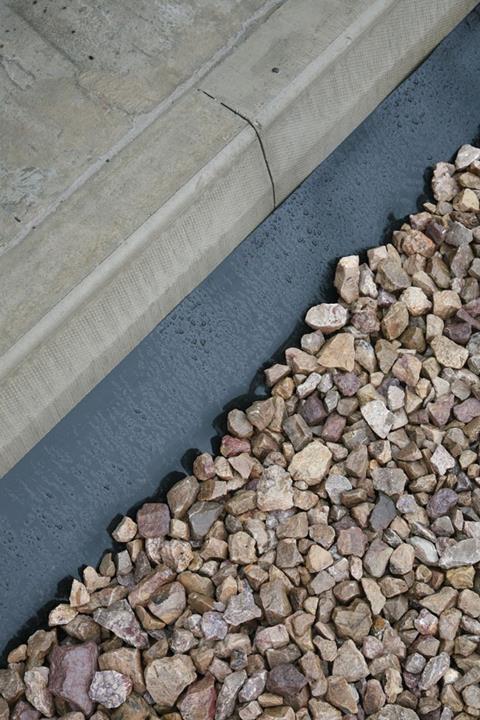
Permeable concrete
Porous or permeable concrete pavements provide a smooth, even surface and can be used as a direct replacement for more traditional pavements. Applications include low-volume residential roads and parking lots, driveways, pavements, cycle paths, patios, tennis courts, road shoulders, swimming pool decks and hardstanding for sports facilities.
Products such as Topmix Permeable from Tarmac offer a compressive strength of 10-20N/mm2, flexural strength of 1.5-3N/mm2 and an average permeability rate of 36,000mm/hr. The minimum required permeability rates will vary greatly according to local climate conditions, but as an approximate guide, the average permeability required to cope with a 100-year storm event is 300mm/hr. It is recommended that permeable paving must still be able to function effectively when blocked by up to 95%.
Unlike traditional asphalt and concrete, permeable concrete can reduce the impact of the urban heat island effect, because the voids within its structure mean it is less dense and therefore has less ability to store heat. In addition, water stored in the voids can evaporate in warmer weather, potentially creating a cooling effect.
A typical system consists of a layer of permeable concrete installed on top of an aggregate attenuation layer (the thickness dependent on design and storage requirements), which is in turn laid onto undisturbed soil or a capping layer. Geotextiles will be included dependent on the design. The exact make-up of a permeable pavement will depend on many factors including structural and geological design. In applications using permeable blocks, where increased traffic loadings are expected or significant soil remediation is needed, hydraulically bound course-graded aggregate may be required to provide added strength. Permeable concrete can perform this function.
Porous asphalt
Advanced porous asphalt systems can provide a cost-effective, quick-to-install approach to SuDS. As with permeable concrete, porous asphalt can be used on a wide range of applications including retail parks, car parks, driveways, sports surfaces and play areas. Pavements are usually a surface course on binder course, giving a typical asphalt thickness between 90 and 120mm on areas subject to vehicular traffic. Heavier duty pavements can be designed to incorporate an additional porous base layer. Products such as UltiSuDS from Tarmac offer a minimum permeability rate of up to 5,000mm/hr.
Porous asphalt systems can also offer high levels of water filtration and cleansing. Tarmac contracted the SuDS Applied Research Group at Coventry University to investigate the ability of porous paving surfaces to capture and retain urban pollutants. The initial results, published in May 2009, indicated that metal and oil pollution retention could exceed 99%.
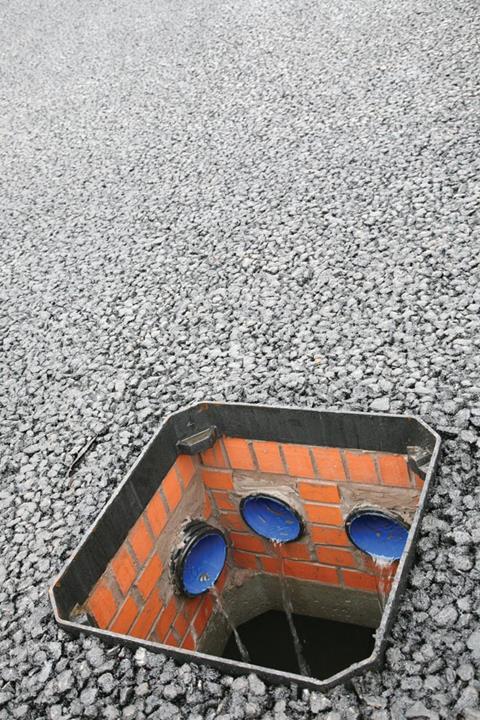

How to take this module
UBM’s CPD distance-learning programme is open to anyone seeking to develop their knowledge and skills. Each module also offers members of professional institutions an opportunity to earn between 30 and 90 minutes of credits towards their annual CPD requirement.
This article is accredited by the CPD Certification Service. To earn CPD credits, read the article and then click the link below to complete your details and answer the questions. You will receive your results instantly, and if all the questions are correctly answered, you will be able to download your CPD certificate straight away.
CPD CREDITS: 60 MINUTES
DEADLINE: 30 OCTOBER 2015
Privacy policy
Information you supply to UBM Information Ltd may be used for publication and also to provide you with information about our products or services in the form of direct marketing by email, telephone, fax or post. Information may also be made available to third parties. UBM Information Ltd may send updates about ��ɫ����TV CPD and other relevant UBM products and services. By providing your email address you consent to being contacted by email by UBM Information Ltd or other third parties. If at any time you no longer wish to receive anything from UBM Information Ltd or to have your data made available to third parties, contact the Data Protection Coordinator, UBM Information Ltd, FREEPOST LON 15637, Tonbridge, TN9 1BR, Freephone 0800 279 0357 or email ubmidpa@ubm.com. View our full privacy policy at






















1 Readers' comment